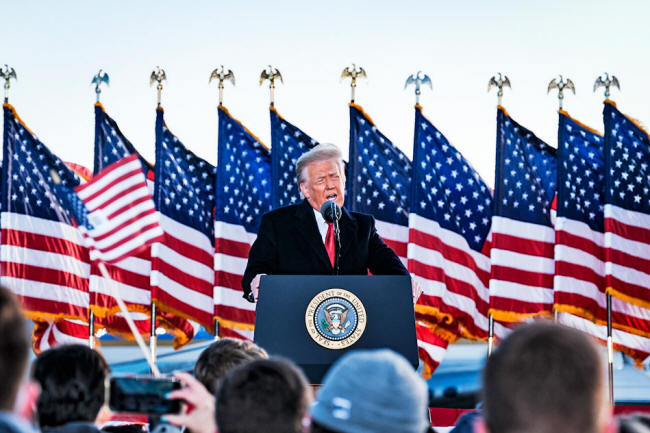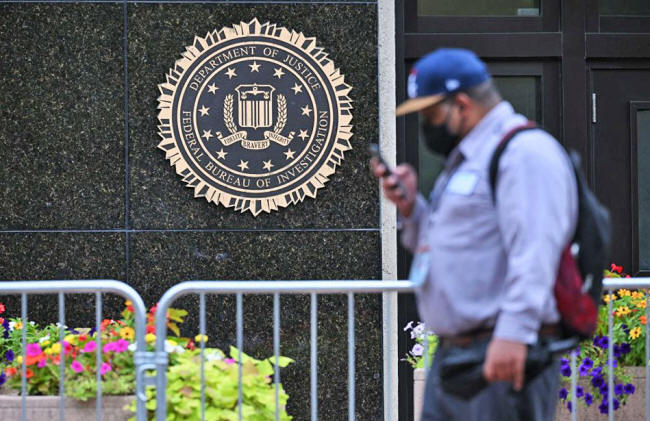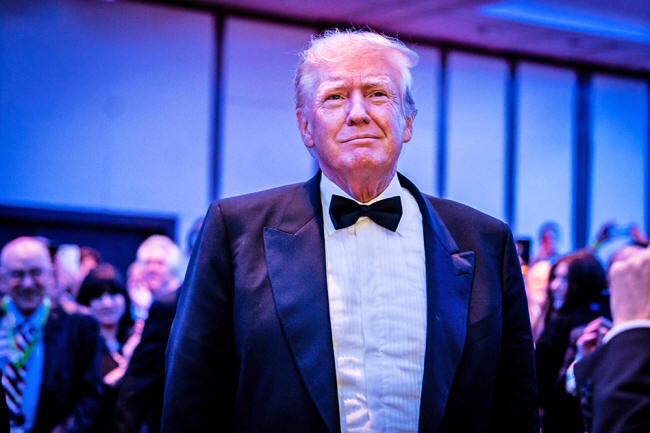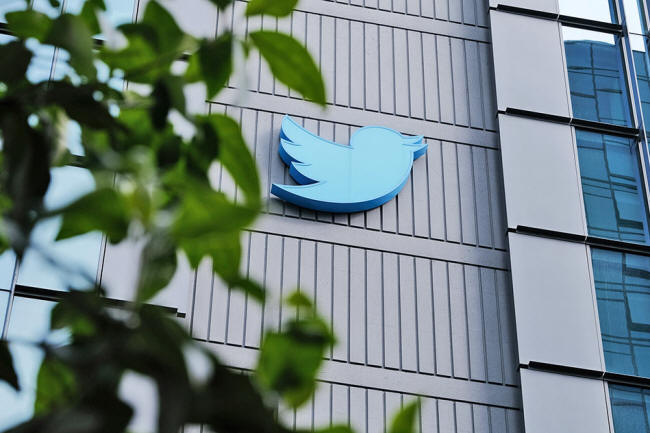|

by
Caden Pearson
December 10,
2022
from
TheEpochTimes Website

Journalist Matt Taibbi published the third volume of the
so-called "Twitter files" on Friday, exposing the social media
platform's censorship and deplatforming of former President
Donald Trump.
The latest disclosure revealed that Twitter executives used the
platform's formidable "visibility filtering" powers against Trump
ahead of the 2020 U.S. elections and that engagement with the FBI
intensified before Trump was permanently suspended.
Endorsed by Twitter's new owner Elon Musk, the "Twitter
files" have exposed the social media company's censorship machine.
The new report, report titled "The Removal of Donald Trump," (Part
1 and
Part 2) is the first of three
specifically examining the actions of Twitter executives during the
period from October 2020 to when Trump was deplatformed on Jan. 8,
2021.
Internal Slack chats at Twitter reveal that engagement
between the company's executives and federal law enforcement and
intelligence organizations surged during this period.

Tesla Chief Executive Elon Musk
speaks
during the live-streamed unveiling of
the
Tesla Semi electric truck in Nov. on Dec. 1, 2022.
(Tesla/Handout via Reuters)
"Whatever your
opinion on the decision to remove Trump that day, the internal
communications at Twitter between January 6th-January 8th have
clear historical import," Taibbi wrote.
"Even Twitter's
employees understood in the moment it was a landmark moment in
the annals of speech."
"Is this the first sitting head of state to ever be suspended?"
one Twitter employee, whose name is redacted, asked in a
Slack chat that day.
Banning Trump
The messages show that Twitter executives removed Trump in part
because of what one executive called,
the "context
surrounding" the actions of Trump and his supporters "over the
course of the election and frankly last 4+ years."
In a message to Vijaya
Gadde, Twitter's former head of legal policy and trust,
one executive whose name is redacted provided a "quick take"
formulated by internal researchers and external academics to help
decide whether to censor a Trump tweet or use it "as a last straw"
before banning him.
The executive said,
"the decision on
whether to pull that particular tweet" or use it "as a last
straw" for Trump depends on "the overall context and narrative
in which that tweet lives."
"Context matters and the narrative that [T]rump and his friends
have pursued over the course of this election and frankly last
4+ years must be taken into account," the executive said,
according to a screenshot of internal messages.
Before Trump was banned,
Twitter also created a new tool to censor the then-sitting president
after the election when he was vocal with his claims of election
fraud. Internally, executives referred to the tool as "L3
deamplication."
The new tool was announced on Dec. 10, 2020, when,
"Trump was in the
middle of firing off 25 tweets saying things like, 'A coup is
taking place in front of our eyes'," Taibbi wrote.
On Thursday, The Free
Press editor Bari Weiss, another reporter handpicked by
Musk as a conduit for releasing the files, published her report on
the extent of Twitter's tools for censorship, revealing the social
media company's secret blacklists.
Her report noted that
executives refer to "shadow banning" as "visibility filtering."

The seal of the Federal Bureau of Investigation
is seen
outside of its headquarters
in
Washington on Aug. 15, 2022.
(Mandel
Ngan/AFP via Getty Images)
Messages Show
Twitter-FBI Relationship
The FBI sent reports to Twitter executives flagging particular
tweets, which were then discussed internally, resulting in action
taken to censor some tweets or have warning labels slapped on
others.
Twitter executives set up a dedicated chat group in October 2020 to
discuss election-related removals, the files show.
Neither the Trump campaign, the Trump White House, nor "Republicans
generally" sent moderation requests to Twitter, Taibbi noted.
"We looked. They may
exist: we were told they do. However, they were absent here," he
wrote.
The framework for
justifying banning Trump was built in the months before January
2021, when federal agencies were meeting with Twitter executives
more often, according to Taibbi.
At one point, Yoel Roth, Twitter's former head of trust and
safety, noted in a Slack message regarding Twitter's censorship of
the New York Post's
Hunter Biden
laptop story that he had "weekly sync" meetings regarding
election security with the FBI, Department of Homeland Security, and
office of the Director of National Intelligence.
"As the election
approached, senior executives - perhaps under pressure from
federal agencies, with whom they met more as time progressed -
increasingly struggled with rules, and began to speak of 'vios'
as pretexts to do what they'd likely have done anyway," Taibbi
wrote.

Former President Donald Trump
arrives
at the 2022
Zionist
Organization of America Superstar Gala
to
receive the ZOA Theodor Herzl Medallion at
Pier
Sixty in New York City on Nov. 13, 2022.
(Samira
Bouaou/The Epoch Times)
Internal Slack chats suggest that communication lines between
Twitter executives and the FBI were more intense after Jan. 6, 2021,
and the chats illustrate executives' attitudes toward the meetings.
One screenshot of internal messages showed a Slack chat from
Roth about how difficult it was for him to conceal his FBI meetings
in his calendar.
"I'm a big believer
in calendar transparency," Roth wrote.
"But I reached a
certain point where my meetings became... very interesting... to
people and there weren't meeting names generic enough to cover."
An employee whose name is
redacted, leaning into the joke, replied:
"Very Boring Business
Meeting That Is Definitely Not About Trump ;)."
"Preeeeeeeetty much," Roth replied.
"DEFINITELY NOT
meeting with the FBI I SWEAR."
Roth's colleague replied,
"lmao," to indicate they found it amusing.

The Twitter headquarters
signage
on 10th Street in San Francisco
on Nov.
4, 2022.
(David
Odisho/Getty Images)
'Erosion on
Standards' at Twitter
According to Taibbi, the findings expose "the erosion of standards"
at Twitter, as well as actions that were undertaken by high-level
executives that violated the company's own policies in the months
leading up to the events in the U.S. Capitol on Jan. 6, 2021,
prompting Twitter to ban Trump indefinitely.
Screengrabs of internal messages revealed that as soon as
Twitter executives banned Trump, they began planning to
ban future presidents - with one executive noting that then-incoming
President
Joe Biden's administration,
"will not be
suspended by Twitter unless absolutely necessary."
Taibbi's report on
Trump's ban, the first of three, on Twitter provided a number of
examples, sharing screengrabs from internal Twitter communications
as evidence.
Taibbi, Weiss, and author Michael Shellenberger
are the three authors Musk is using to release the inner workings of
Twitter prior to his $44 billion acquisition of the social media
company.
On Friday, Taibbi said,
he, Weiss, and
Shellenberger would publish three volumes dedicated to the
censorship of Trump on Friday, Saturday, and Sunday on Twitter.
Shellenberger's
follow-up,
report on
Saturday "will detail the chaos inside Twitter" on the
day Twitter banned Trump, while Weiss's report on Sunday
will "reveal the secret internal communications from the key
date" of Jan. 8, 2021.
|






